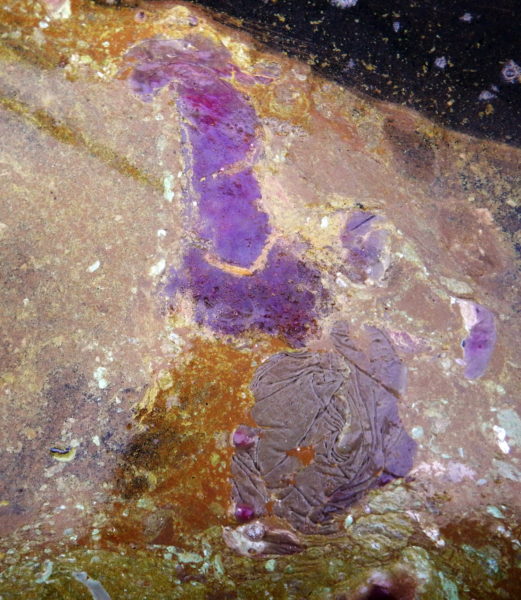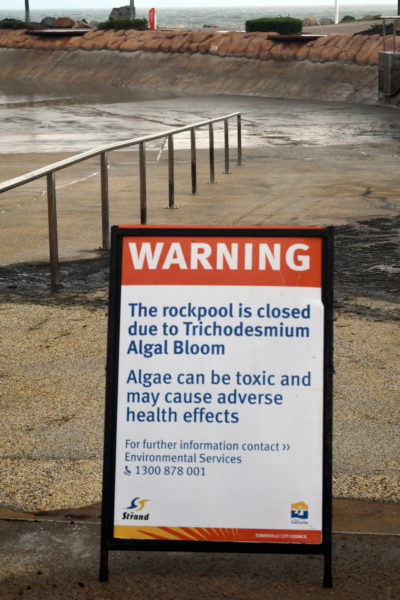Published in the Ocean Watch column, Honolulu Star-Advertiser © Susan Scott
October 7, 2017
TOWNSVILLE, AUSTRALIA >> Last week a Tahitian snapper made itself known to me by opening its own page in my fish book. This week an ocean plant I didn’t know called attention to itself by floating around Honu’s hull in swirls of yellow, purple and pink. With the plant came its signature smell, the nose-wrinkling stink of dead fish.
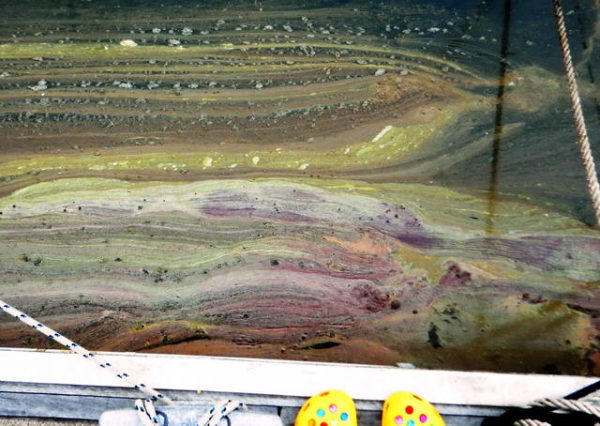 Sea sawdust blooms in the Coral Sea, forming strips of
Sea sawdust blooms in the Coral Sea, forming strips of
growth so large that they’re visible in satellite photos.
©2017 Susan Scott
The alga — scientific name Trichodesmium (trick-o-DEZ-me-um) — is commonly called sea sawdust. Australian boaters know this marine alga well because it occasionally blooms in the Coral Sea, forming strips of growth so large they’re visible in satellite photos.
The streaks the alga sometimes forms on the ocean’s surface spooked Capt. James Cook and his crew in 1770. In his log Cook wrote, “The sea in many places is here cover’d with a kind of brown scum … upon our first seeing it, it alarm’d us thinking that we were amongst Shoals.”
They were not, however, in shallow water, but were sailing through miles of one of the most vital marine plants in our planet’s oceans.
Trichodesmium is a blue-green alga that grows as tiny filaments, like miniature grains of rice. Usually, the barely visible seaweed lives in the water column where endless tiny animals eat it. During blooms, though, thousands of alga strands stick together and float to the surface in miles-long lanes of sea sawdust.
Sometimes the alga produces substances that are toxic to fish and irritating to human skin. Other times, depending on conditions, the plant produces red, pink and purple pigments. The Red Sea got its name from a red strain of this alga.
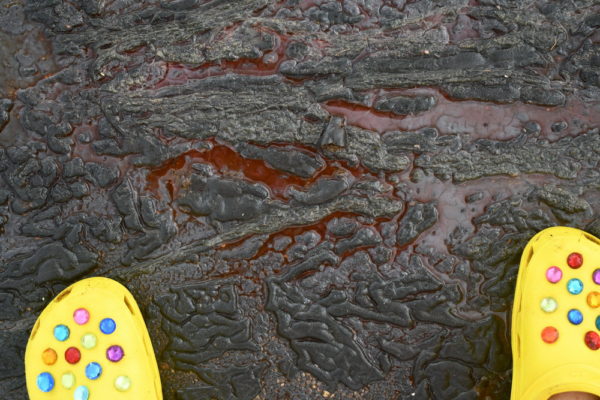
Sea sawdust is key in keeping the nutrient-poor tropical and subtropical oceans around the world productive by converting nitrogen from the air to fertilizers crucial to other marine plants.
Blooms of sea sawdust during periods of calm seas are common inside the Great Barrier Reef. People here accept the colorful alga mats and their pungent odor as part of life on Australia’s tropical coast.
Trichodesmium films smell fishy because when each plant dies, its cell wall breaks down and the insides spill out. Bacteria eat the spillage, a meal that gives them gas. Called dimethyl sulfide or DMS, the gas is one of several fishy odors we associate with the ocean.
As we set about provisioning Honu for our latest voyage in the Great Barrier Reef Marine Park, Craig and I marveled over the colorful eddies around the boat, a vision worthy of an exhibition in a modern art museum. And the odor? Well, learning the chemistry of the plant, knowing the significance of it to the world’s oceans and remembering that bacteria pass gas like everyone else took the smart out of the smell.
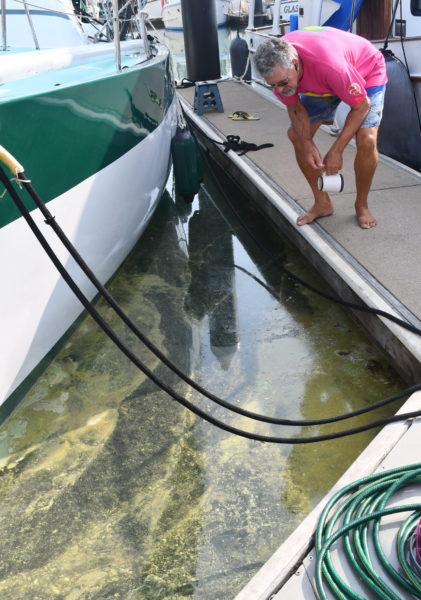
I’m in no hurry to sail Honu out of this marina, because it’s in the central part of the Great Barrier Reef Marine Park, pure heaven for us oceangoers. All I have to do is open my eyes, breathe in deep and, like the Tahitian snapper, let the marine life come to me.
